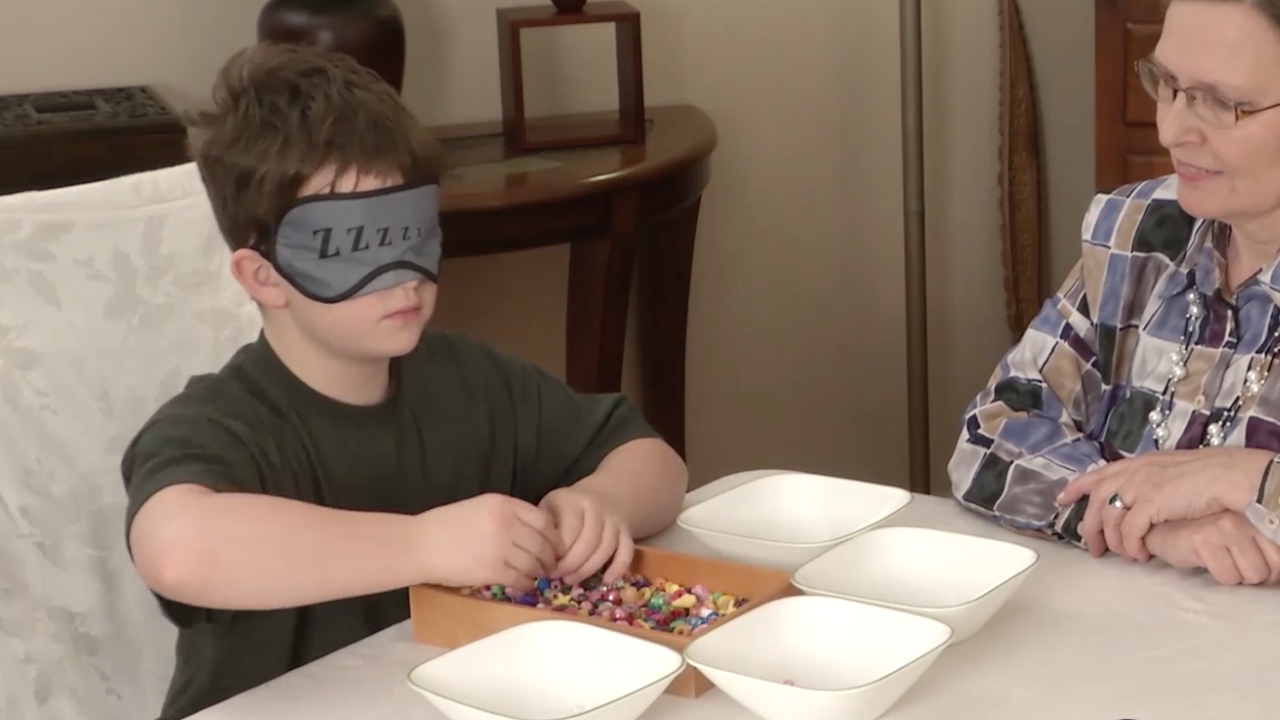[av_section min_height=” min_height_px=’500px’ padding=’default’ shadow=’no-shadow’ bottom_border=’no-border-styling’ scroll_down=” id=” color=’main_color’ custom_bg=” src=” attach=’scroll’ position=’top left’ repeat=’no-repeat’ video=” video_ratio=’16:9′ video_mobile_disabled=” overlay_enable=” overlay_opacity=’0.5′ overlay_color=” overlay_pattern=” overlay_custom_pattern=”]
[av_textblock size=” font_color=” color=” admin_preview_bg=”]
Scientists have used MRI to see which areas of the brain light up when we touch something. They found that different areas of the brain are used depending on the shape, size and texture of the item (1). Another study found that blind people have a more highly developed sense of touch than sighted people (2). As described below, we recommend doing the bead-sorting exercise wearing a blindfold. This helps the brain to focus on the tactile inputs.
Many of the Mendability protocols use active tactile discovery to help the brain create new pathways. These tactile activities can be valuable therapeutic tools to help children who struggle with tactile defensiveness.
One Mendability exercise is to ask a child to sort a variety of beads by shape and size, with their eyes closed. You will see how the child gets better at telling the beads apart after doing this for just two or three minutes a day, for a few days in a row.
As the child grows new pathways and develops their ability to identify more and more shapes, sizes and textures, we can expect that many other aspects of touch will also improve. Parents on our program have reported major improvements in areas like eating, wearing socks, and enjoying cuddles, thanks to these types of tactile explorations.
Recent neuroscience research has shown that the tactile processing difficulties of children with autism stem largely from microscopic malformations in various brain areas involved in this task. As with any other brain activity, learning and practice are the best choices to improve this processing (3).
Protocol Description:
[av_notification title=’Note’ color=’green’ border=” custom_bg=’#444444′ custom_font=’#ffffff’ size=’large’ icon_select=’no’ icon=’ue800′ font=’entypo-fontello’]
This example may not be suitable for everyone, especially with the use of small objects that could obstruct airways.
[/av_notification]
Equipment:
– One pound of colored craft beads, in different shapes and sizes;
– One flat, open, rectangular container;
– Four bowls;
– One blindfold (a scarf, swimming goggles filled with facial tissue or a sleep mask).
[/av_textblock]
[/av_section][av_section min_height=” min_height_px=’500px’ padding=’default’ shadow=’no-shadow’ bottom_border=’no-border-styling’ scroll_down=” id=” color=’main_color’ custom_bg=” src=” attach=’scroll’ position=’top left’ repeat=’no-repeat’ video=” video_ratio=’16:9′ video_mobile_disabled=” overlay_enable=” overlay_opacity=’0.5′ overlay_color=” overlay_pattern=” overlay_custom_pattern=”]
[av_video src=’http://youtu.be/mNUw4d0ZpQA’ format=’16-9′ width=’16’ height=’9′]
[/av_section]
[av_section min_height=” min_height_px=’500px’ padding=’default’ shadow=’no-shadow’ bottom_border=’no-border-styling’ scroll_down=” id=” color=’main_color’ custom_bg=” src=” attach=’scroll’ position=’top left’ repeat=’no-repeat’ video=” video_ratio=’16:9′ video_mobile_disabled=” overlay_enable=” overlay_opacity=’0.5′ overlay_color=” overlay_pattern=” overlay_custom_pattern=”]
[av_textblock size=” font_color=” color=”]
Protocol:
Have him/her feel beads, one at a time, and decide which of the 4 containers it should go into.
Have him continue to feel beads, decide which container the bead should go into, etc for no more than a couple of minutes, unless he/she wants to continue for longer.
If the blindfold makes your him/her too anxious, you may hide the beads from view in a pillow case. Ideally, the bowls, or any receptacle you use for this exercise, should also be covered. The idea is for him to also try to remember “what shape goes where.”
[/av_textblock]
[/av_section]

